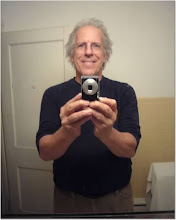Why Are We Still Teaching Reading the Wrong Way?
Teacher preparation programs continue to ignore the sound science behind how people become readers.
By Emily Hanford

Our
children aren’t being taught to read in ways that line up with what
scientists have discovered about how people actually learn.
It’s
a problem that has been hiding in plain sight for decades. According to
the National Assessment of Educational Progress, more than six in 10
fourth graders aren’t proficient readers. It has been this way since
testing began. A third of kids can’t read at a basic level.
How
do we know that a big part of the problem is how children are being
taught? Because reading researchers have done studies in classrooms and
clinics, and they’ve shown over and over that virtually all kids can
learn to read — if they’re taught with approaches that use what
scientists have discovered about how the brain does the work of reading.
But many teachers don’t know this science.
What
have scientists figured out? First of all, while learning to talk is a
natural process that occurs when children are surrounded by spoken
language, learning to read is not. To become readers, kids need to learn
how the words they know how to say connect to print on the page. They
need explicit, systematic phonics instruction. There are hundreds of studies that back this up.
But
talk to teachers and many will tell you they learned something
different about how children learn to read in their teacher preparation
programs. Jennifer Rigney-Carroll, who completed a master’s degree in
special education in 2016, told me she was taught that children “read
naturally if they have access to books.” Jessica Root, an intervention
specialist in Ohio, said she learned “you want to get” children “excited
about what they’re reading, find books that they’re interested in, and
just read, read, read.” Kathy Bast, an elementary school principal in
Pennsylvania, learned the same thing. “It was just: Put literature in
front of the kids, teach the story, and the children will learn how to
read through exposure,” she said.
These
ideas are rooted in beliefs about reading that were once commonly
called “whole language” and that gained a lot of traction in the 1980s.
Whole-language proponents dismissed the need for phonics. Reading is
“the most natural activity in the world,” Frank Smith, one of the
intellectual leaders of the whole-language movement, wrote.
It “is only through reading that children learn to read. Trying to
teach children to read by teaching them the sounds of letters is
literally a meaningless activity.”
These ideas had been debunked
by the early 2000s. It may seem as if kids are learning to read when
they’re exposed to books, and some kids do pick up sound-letter
correspondences quickly and easily. But the science shows clearly that
to become a good reader, you must learn to decode words. Many
whole-language proponents added some phonics to their approach and
rebranded it “balanced literacy.”
But
they did not give up their core belief that learning to read is a
natural process that occurs when parents and teachers expose children to
good books. So, while you’re likely to find some phonics lessons in a
balanced-literacy classroom, you’re also likely to find a lot of other
practices rooted in the idea that children learn to read by reading
rather than by direct instruction in the relationship between sounds and
letters.
For example, teachers will give young children books that
contain words with letter patterns the children haven’t yet been taught.
You’ll see alphabetical “word walls” that rest on the idea that
learning to read is a visual memory process rather than a process of
understanding how letters represent sounds. You’ll hear teachers telling
kids to guess at words they don’t know based on context and pictures
rather than systematically teaching children how to decode.
Many
teachers learn these approaches in their teacher preparation programs.
Publishers perpetuate these ideas, and school districts buy in. But
colleges of education — which should be at the forefront of pushing the
best research — have largely ignored the scientific evidence on reading.
The National Council on Teacher Quality reviewed the syllabuses
of teacher preparation programs nationwide and found that fewer than
four in 10 taught the components of effective reading instruction
identified by research. A study of early-literacy instruction in teacher
preparation programs across the University of North Carolina system found that instructional strategies based on research were mentioned “in
a cursory way, if at all, on most syllabuses.” (Some instructors
required students to write their “personal philosophies” about how to
teach reading.) Kelly Butler of the Barksdale Reading Institute in
Mississippi interviewed more than 100 deans and faculty members of
schools of education as part of a study
of teacher preparation programs in the state and found that most of
them could not explain basic scientific principles about how children
learn to read.
It’s not just ignorance. There’s active resistance to the science, too. I interviewed
a professor of literacy in Mississippi who told me she was
“philosophically opposed” to phonics instruction. One of her colleagues
told me she didn’t agree with the findings of reading scientists because
“it’s their science.”
There is no
excuse for this. Colleges of education have to start requiring that
their faculties teach the science of reading. Children’s futures depend
on it.
Emily Hanford (@ehanford) is a senior education correspondent for APM Reports and the producer of the audio documentary “Hard Words: Why Aren’t Kids Being Taught to Read?” This article is based on her reporting for that project.


No comments:
Post a Comment